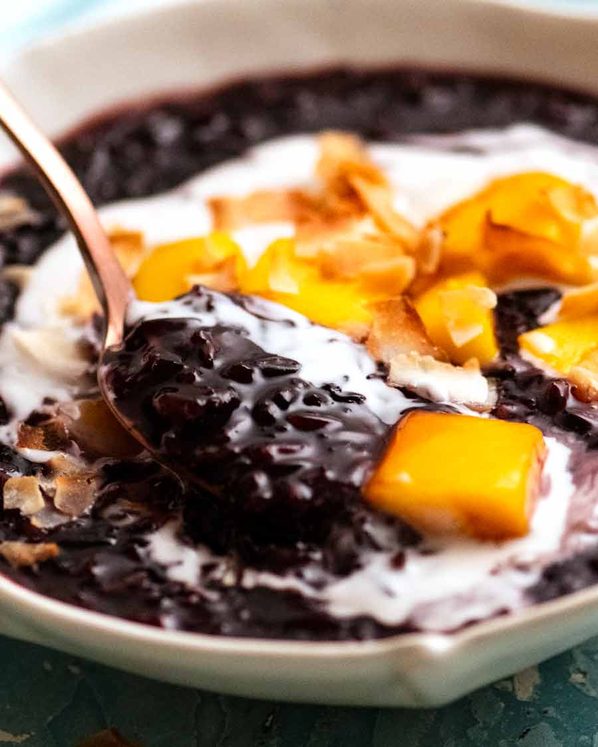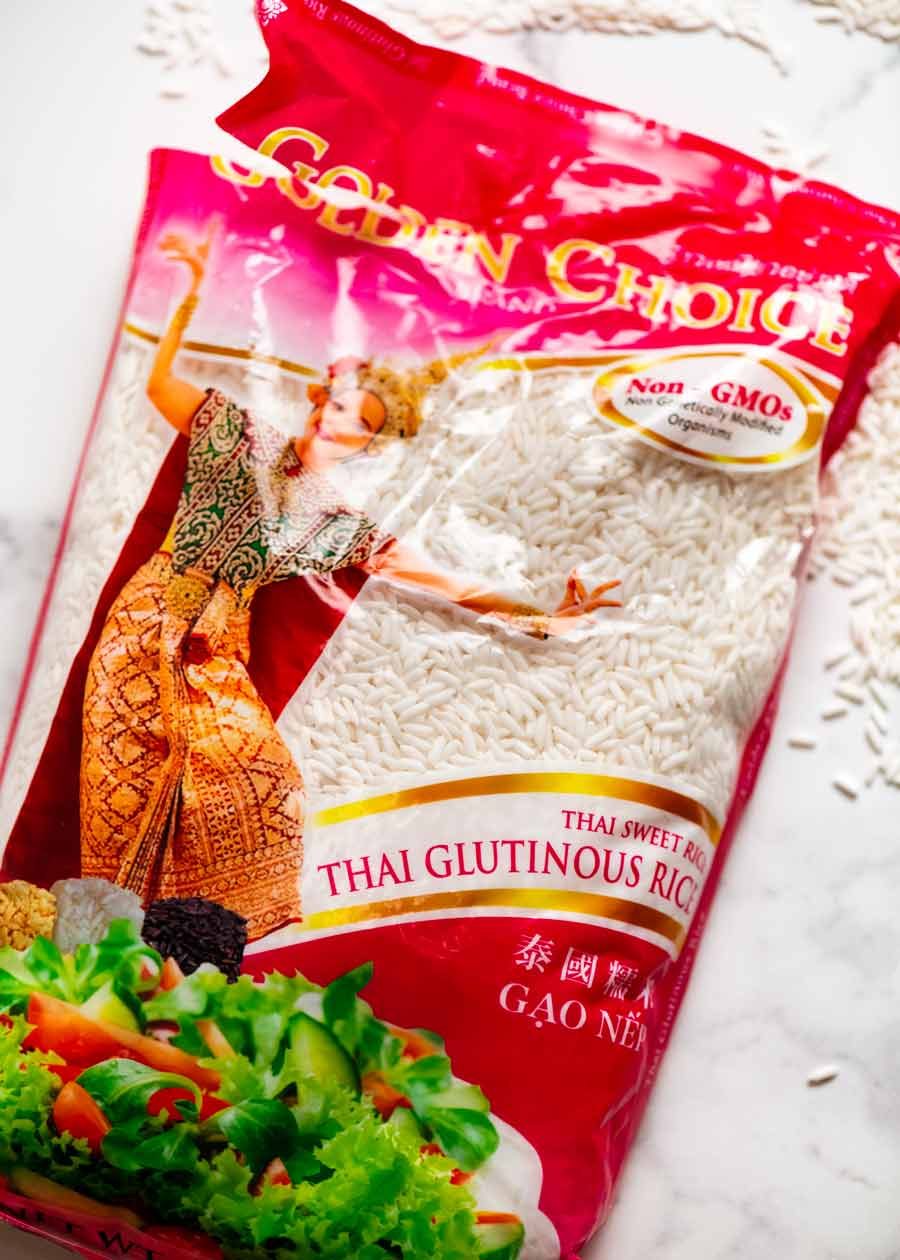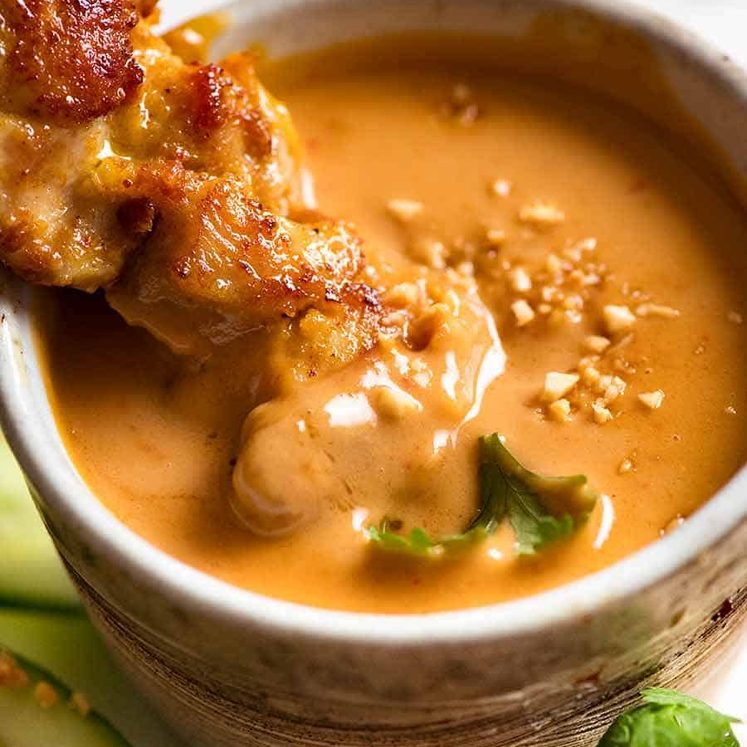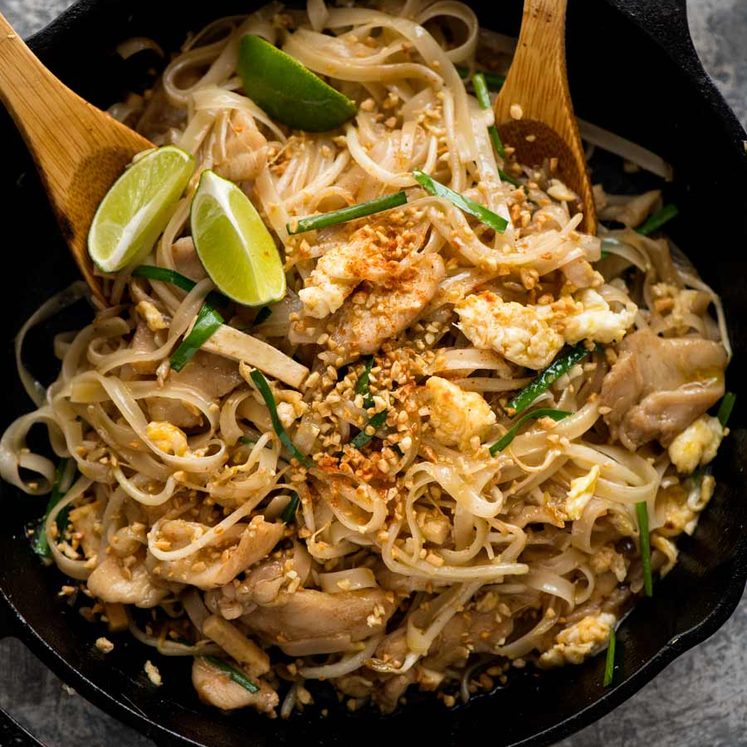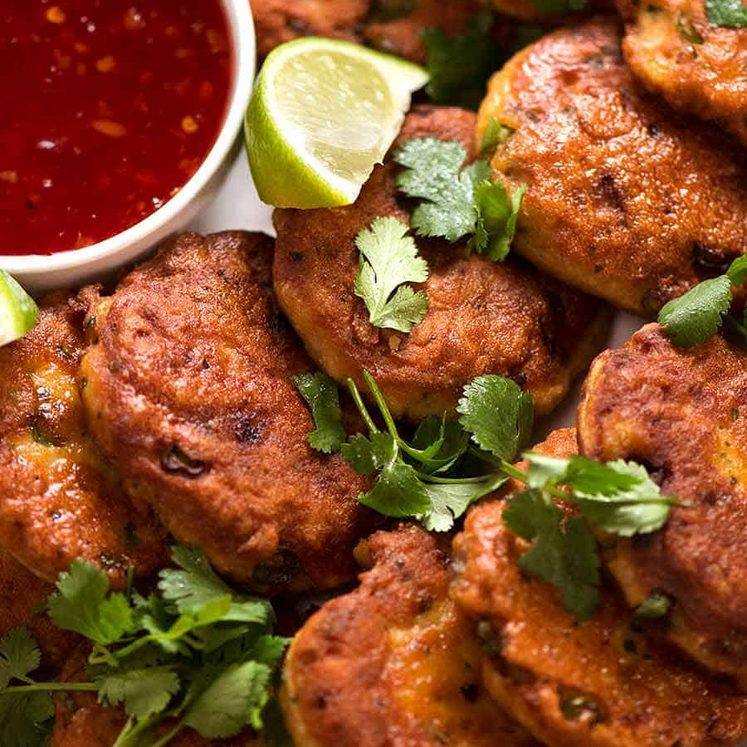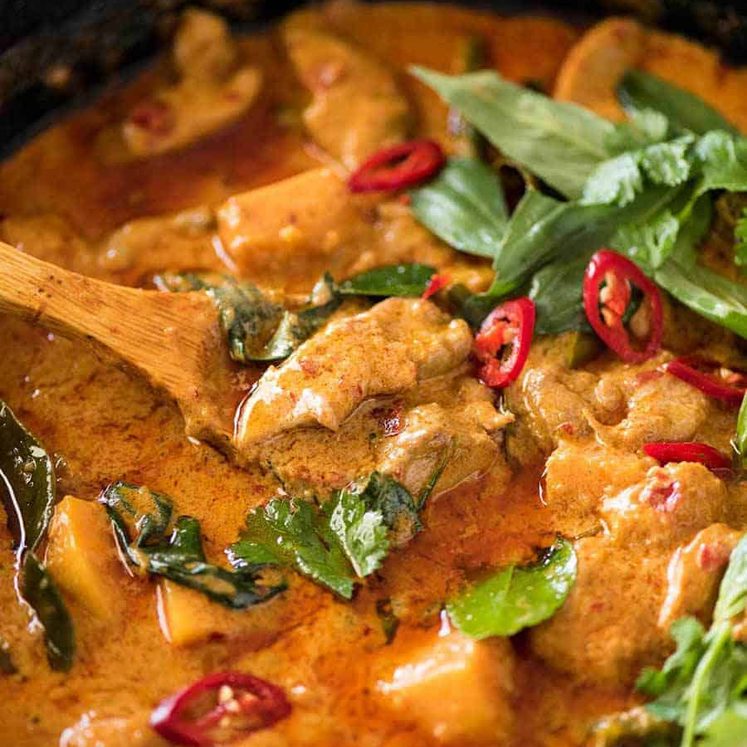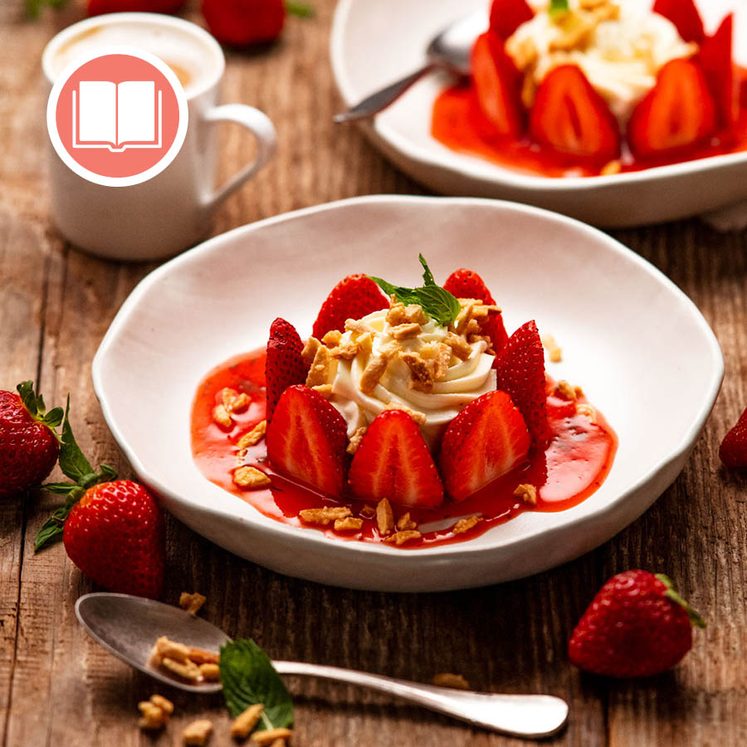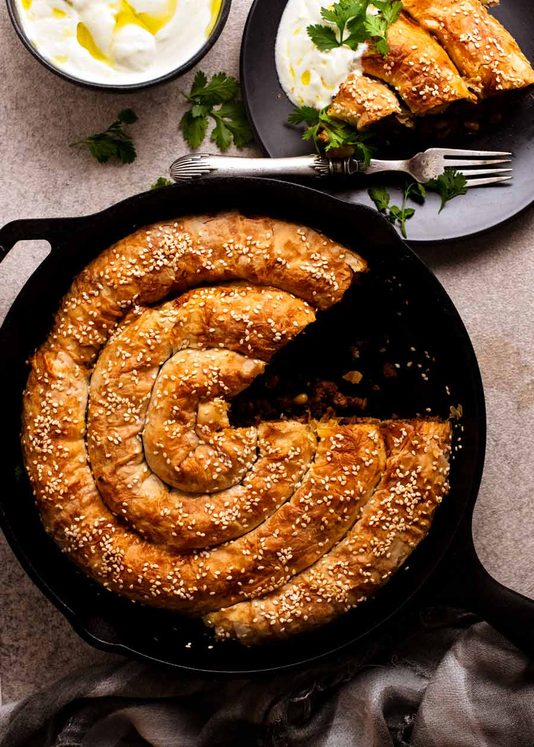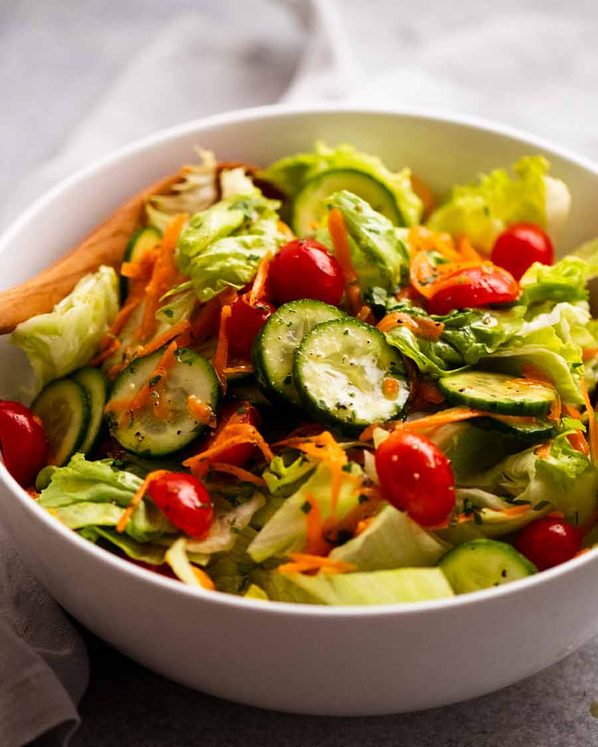Thai Black Sticky Rice Pudding is a traditional Thai dessert that is favoured by upscale modern Asian restaurants for its striking jet black colour. It’s hard to believe you can make something so delicious that is fundamentally, made with just rice, water and sugar!

Welcome back to THAI WEEK!
Welcome back to the final instalment of THAI WEEK, a week where I’m sharing 3 recipes to make your very own Thai feast at home!
Every now and then, I like to do a recipe theme week. This week it’s THAI week, with three classic recipes to make your very own Thai feast at home:
-
Thai Yellow Curry – Made from scratch, this is flavour you literally cannot buy in a jar!
-
Green Papaya Salad – Great as side, yet substantial enough as a starter.
-
Black Sticky Rice Pudding (this recipe) – Dessert!

Thai Black Sticky Rice Pudding
Black sticky rice is a type of glutinous whole grain rice used to make desserts in Thailand and a number of other South-East Asian nations. It has an eye-popping, natural ink-black colour, and when cooked has a nutty flavour with a creamy and sticky pudding-like texture.
Hence the name of this dish – Black Sticky Rice Pudding!
While white sticky rice pudding may be the more well-known Thai dessert, here in Australia upmarket Thai and Modern Asian restaurants tend to favour black sticky rice, for its exotic and eye-catching appearance. It’s not all looks though – it also has a better flavour!
Just like Western puddings, fresh fruit and a creamy sauce are the perfect accessories to complete the dessert. Sticky rice puddings are frequently finished with good drizzle of coconut cream, and sliced tropical fruit of some kind – usually juicy mango.
Rich but not cloying, and shining with the flavours of South-East Asia, this is the quintessential Thai dessert!
(PS. Despite the name, glutinous rice is actually gluten-free. It is rice starch that is responsible for the stickiness. In fact, this dessert is also vegan, nut-free and lactose-free. This might just be the one dish everyone on the planet can happily enjoy!!! 😱🤣)
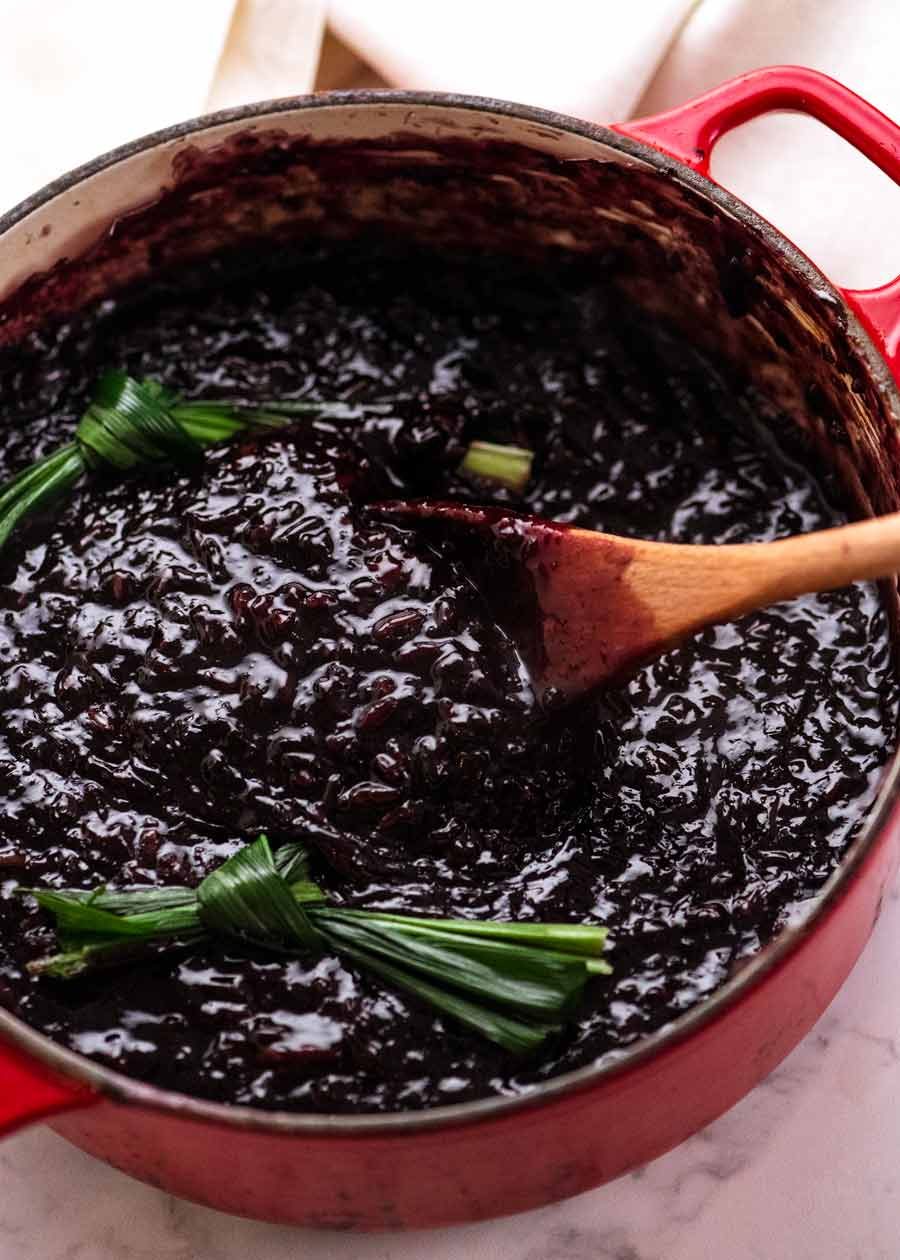
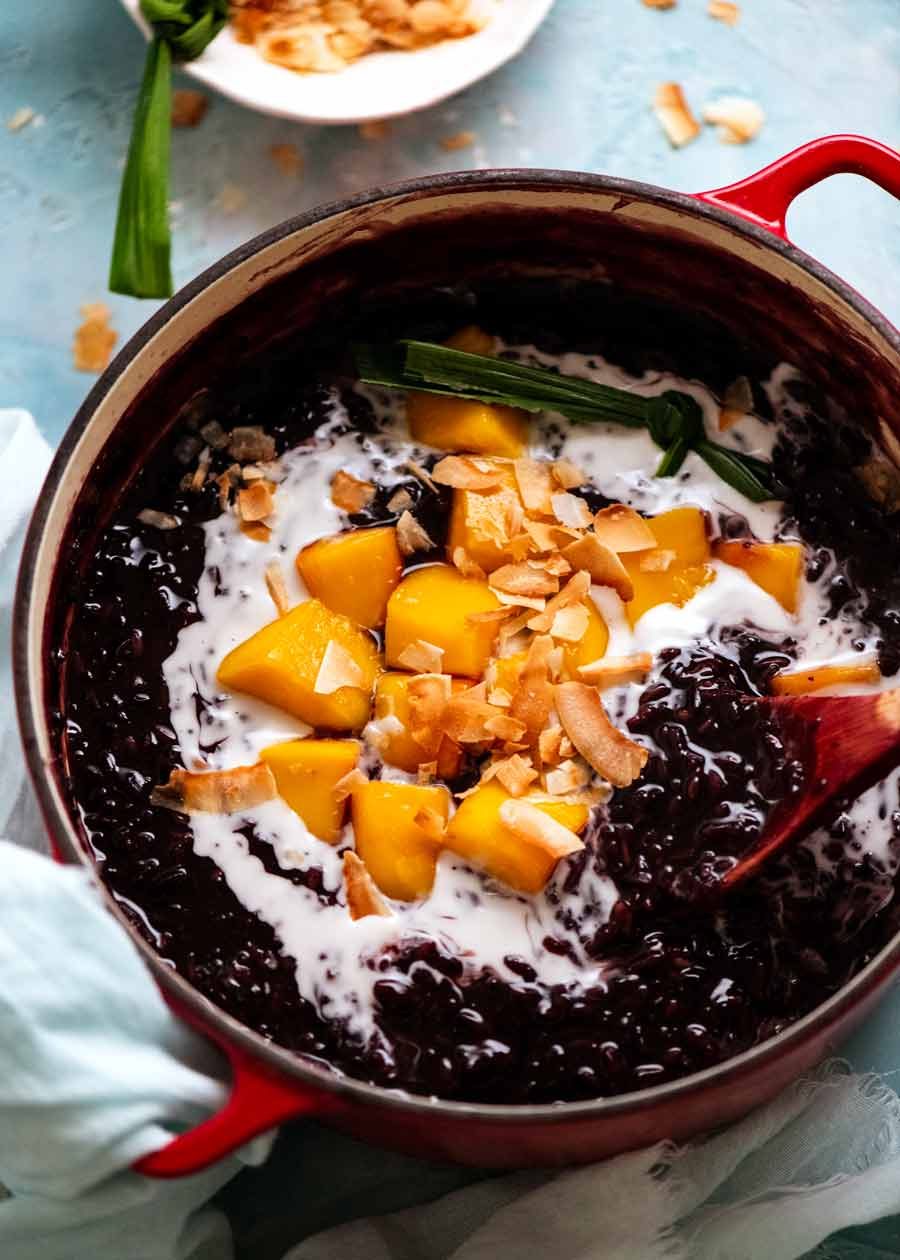
What you need to make Black Sticky Rice Pudding
At its simplest, you only need sticky rice, sugar, salt and water to make a really delicious sticky rice pudding. Everything else just makes it even better, but is still entirely optional!
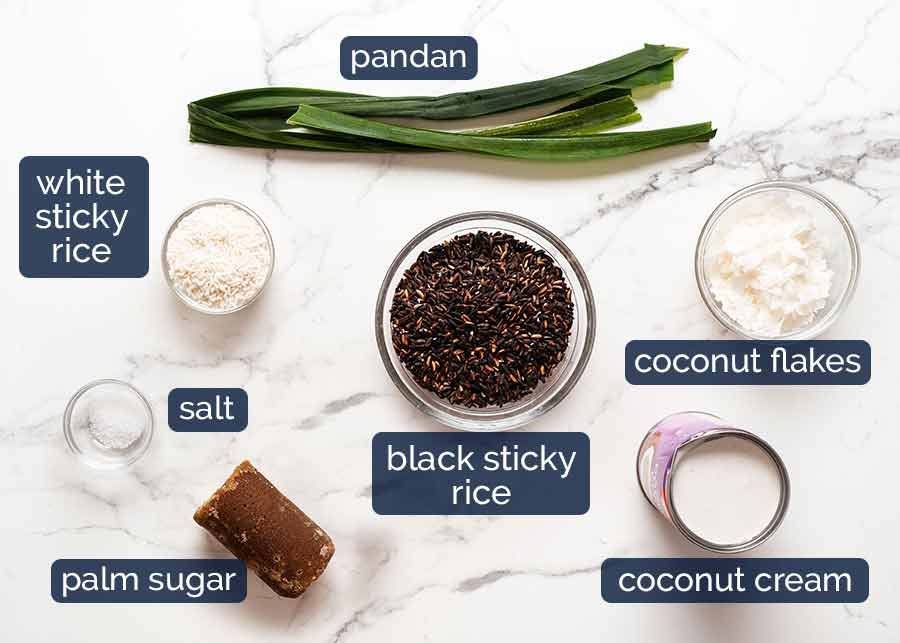
-
Sticky rice – Usually labelled “glutinous rice”, this rice becomes sticky when cooked which is what gives a creamy texture to this pudding. Black sticky rice has a wonderful nutty flavour already so we only need water to cook it. See below for more on sticky rice.
Find it in Asian and Thai grocery stores, or online such as here and here (Australia).
-
Pandan leaves – Known in English as screwpine, this is a plant native to South-East Asia that looks similar to a palm tree. The long leaves are added to cooking for their coconut-like scent and flavour for both savoury and sweet applications – especially cakes and desserts. Pandan can be used in powder form, for wrapping things (usually steamed or fried), or just added whole into cooking liquids to infuse like we do in this rice pudding.
It’s sold fresh and frozen in Asian stores and sometimes (🤞🏻) at Harris Farms in Sydney & Queensland.
Can’t find it? Leave it out. This dish is still worth making without it!
-
Palm sugar – Extracted from palm trees (wait, did the name give it away?😂), this sugar is used in South East Asian cooking for its intense caramel sweetness. Substitute with brown sugar, preferably dark brown sugar for better flavour.
-
Salt – A distinct flavour in black rice pudding is a noticeable amount of salt. It’s not a dominant taste, like Salted Caramel. But you can definitely taste it and it’s much needed to balance the sweetness.
Optional toppings
-
Coconut cream – This is used to drizzle on top of the finished dish for serving. It not only adds a lovely touch of rich coconut flavour but also adds a pretty visual flourish to an otherwise very black bowl of rice! Highly recommended but not essential.
-
Coconut flakes – Lightly toasted for a garnish. This is optional!
-
Fresh fruit (not pictured above) – Asian tropical fruits are the most authentic choice. I used mango – a classic – but because it’s not mango season, I just used canned mangoes which these days, are actually very, very good! Other fruits that would go brilliantly are papaya, lychees, longan, durian (!!!), mangosteen, dragonfruit etc. If these are hard to source, summer stone fruit, melons or even sweet citrus fruits would also be absolutely lovely.
These toppings are purely optional. Black rice pudding is absolutely worth making with no toppings at all!
Sticky Rice for Thai Black Sticky Rice Pudding
-
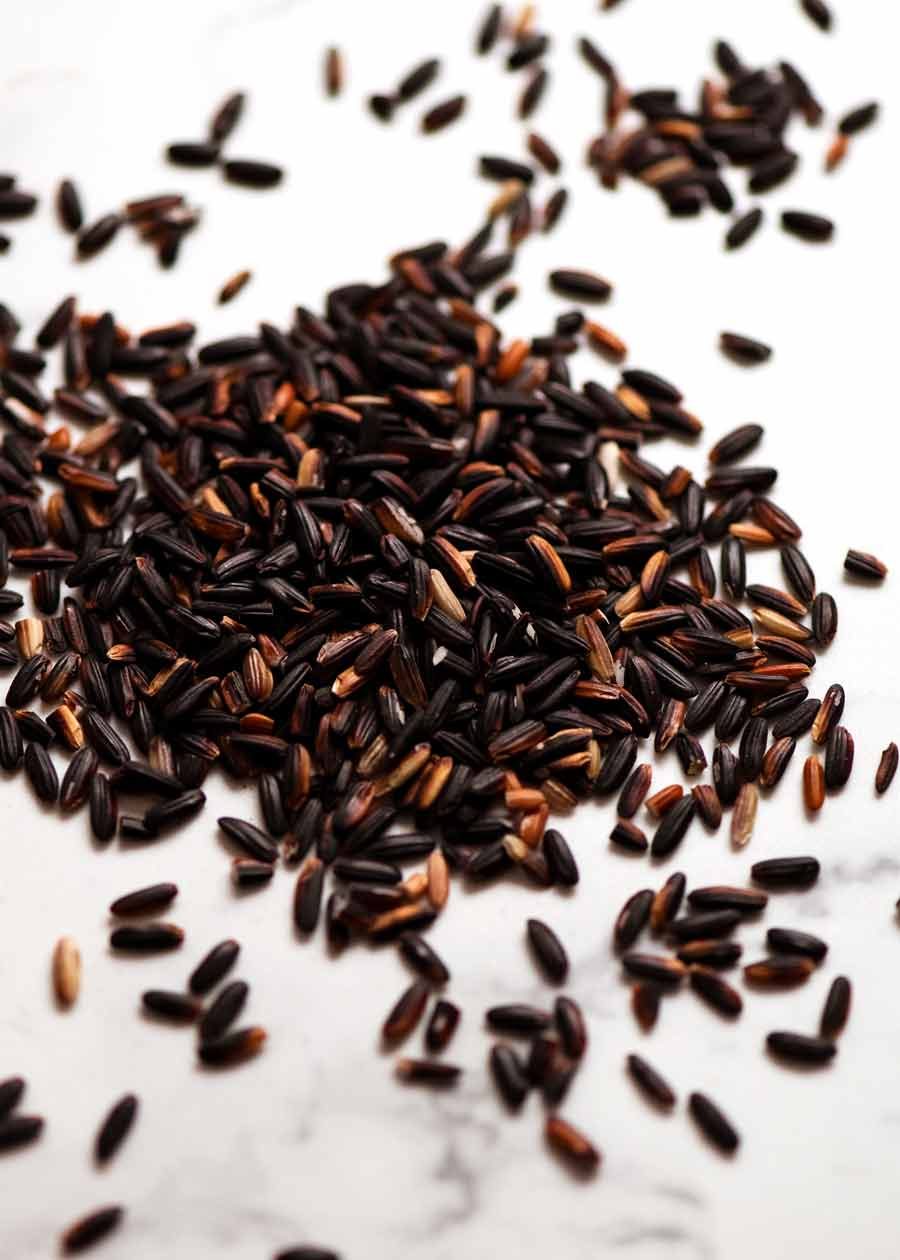
Black sticky rice -
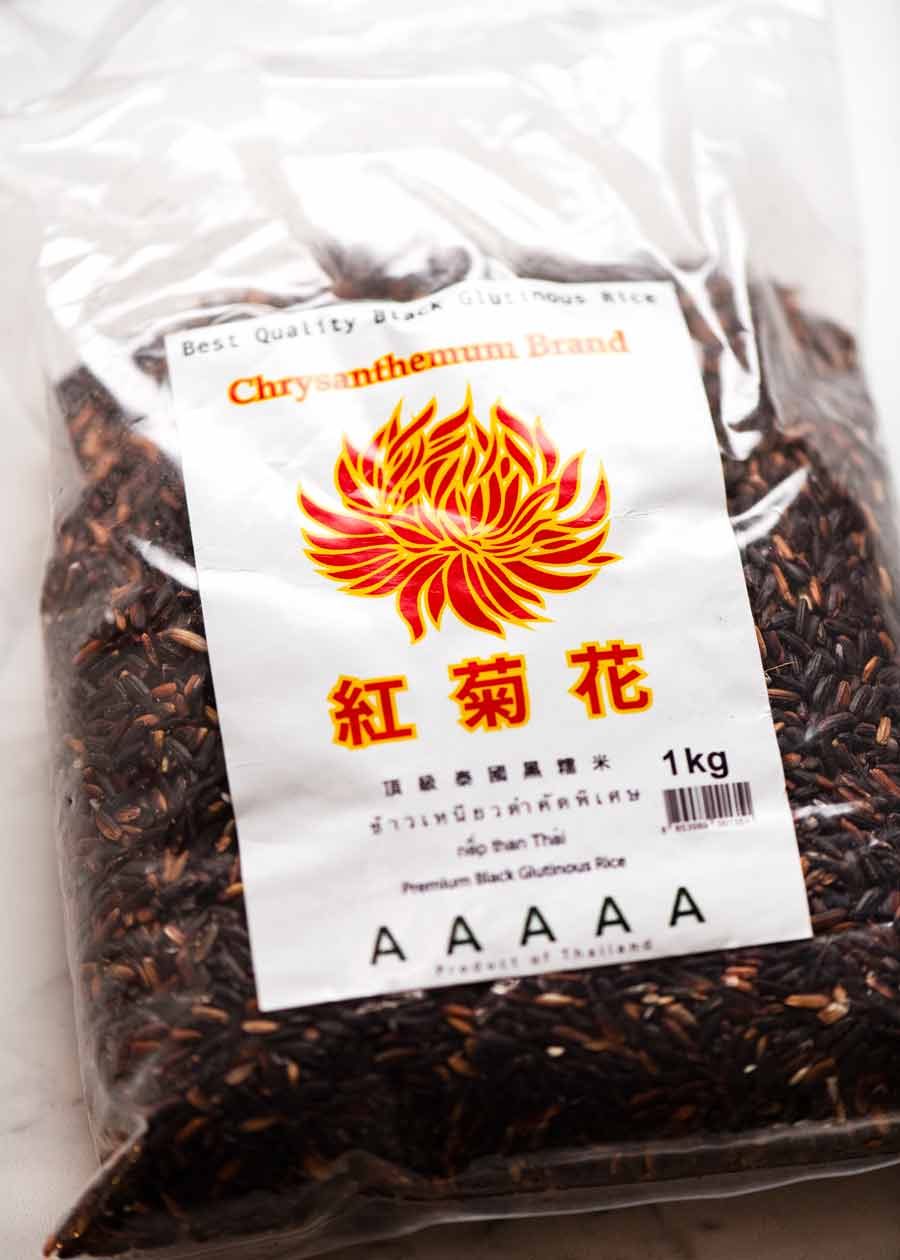
Labelled “black sticky rice” or “glutinous rice” -
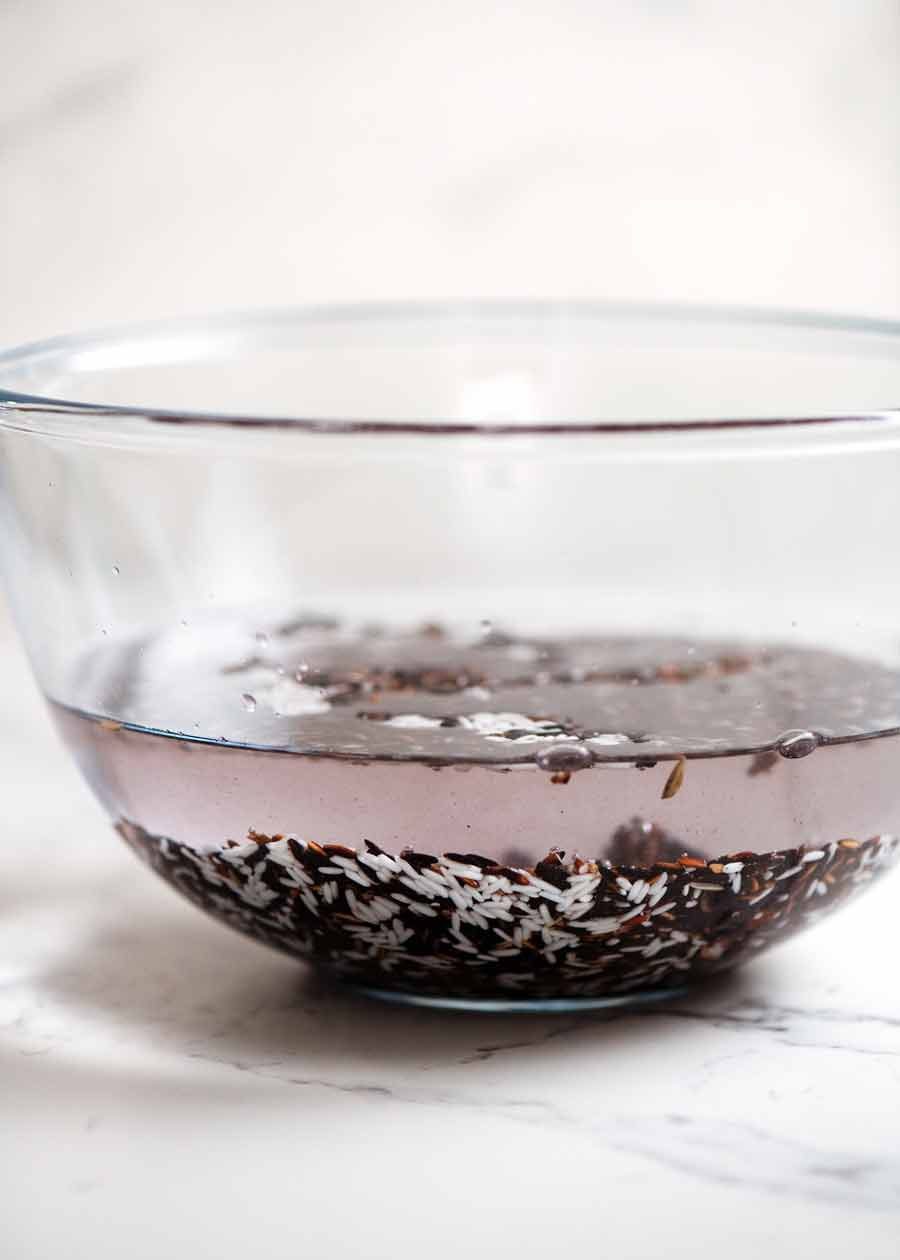
Soaking black and white sticky rice before cooking
There are different varieties of black rice, some of which are glutinous (sticky) and some which are not (such as Chinese Forbidden Rice).
The black rice used to make Thai Sticky Rice Pudding is black glutinous rice. Glutinous rice becomes sticky when cooked, which is the consistency you need to make this glossy, creamy pudding. You won’t get the same result with normal non-glutinous rice, regardless of colour.
Here in Australia, the most common black glutinous rice is from Thailand, though I understand it’s also grown in the Philippines, Indonesian and other Asian countries.
Find it in Asian and Thai grocery stores, or online such as here and here (Australia). It’s usually sold labelled as “glutinous rice”.
White Sticky Rice (optional)
Funny as it sounds, in addition to black sticky rice the recipe also calls for a small amount of white sticky rice. Most Thai black sticky rice recipes call for a combination of both black and white sticky rice because white rice is stickier than black rice, which gives the rice pudding a thicker and creamier texture, while the black rice has more flavour.
However, I consider the white rice to be optional. This pudding still has a really lovely creamy texture even without white rice. It’s just slightly better with white rice!
How to make Thai Black Sticky Rice Pudding
It’s soooo easy! Soak → Simmer → Eat (psst! This parts the best!😂)
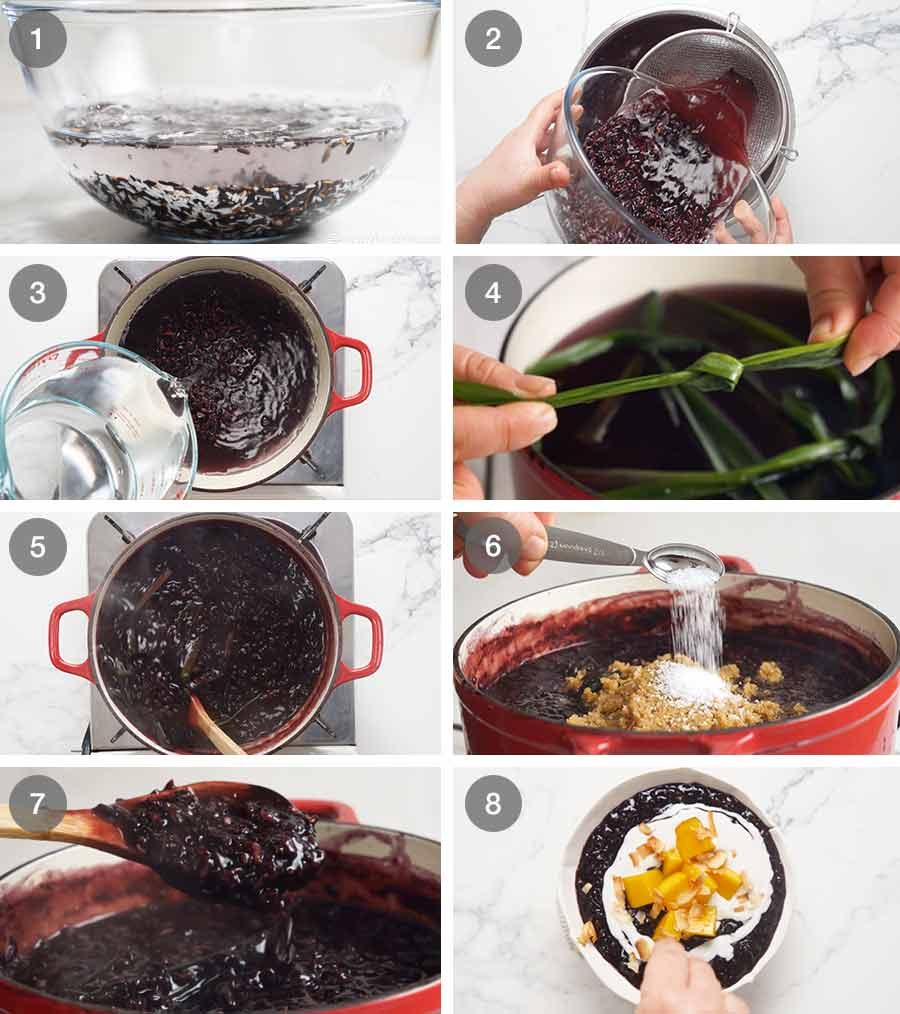
-
Soak the rice for at least 4 hours, or overnight. This ensures that the rice cooks through evenly. If you skip this step, you’ll find that the outside of the rice grains becomes overly soft before the inside cooks through.
-
Drain the rice and shake off excess water.
-
Combine with water – Place rice in a small pot with water.
-
Pandan leaves – Fold the pandan leaves so they will easily fit inside the pot. Then tie into a knot. This breaks the fibres and releases more flavour into the rice.
-
Simmer for 30 minutes on low heat, stirring almost constantly for the last 15 minutes as it thickens to ensure the base doesn’t catch. The liquid will reduce and thicken due to the starch in the rice.
-
Sugar – Add palm sugar and salt, then stir to dissolve. It will only take around 30 seconds or so.
-
Thickness – The black rice pudding should be thick, creamy and glossy as pictured above. Not stodgy and gluey! When spooned into serving bowls it should ooze gently, like good risotto.
-
Serve – Ladle into bowls, then top with a drizzle of coconut cream (highly recommended), toasted coconut flakes (recommended) and diced mango (a lovely extra, but entirely optional), if using.
This is what the consistency should be like – thick and creamy, not stodgy!

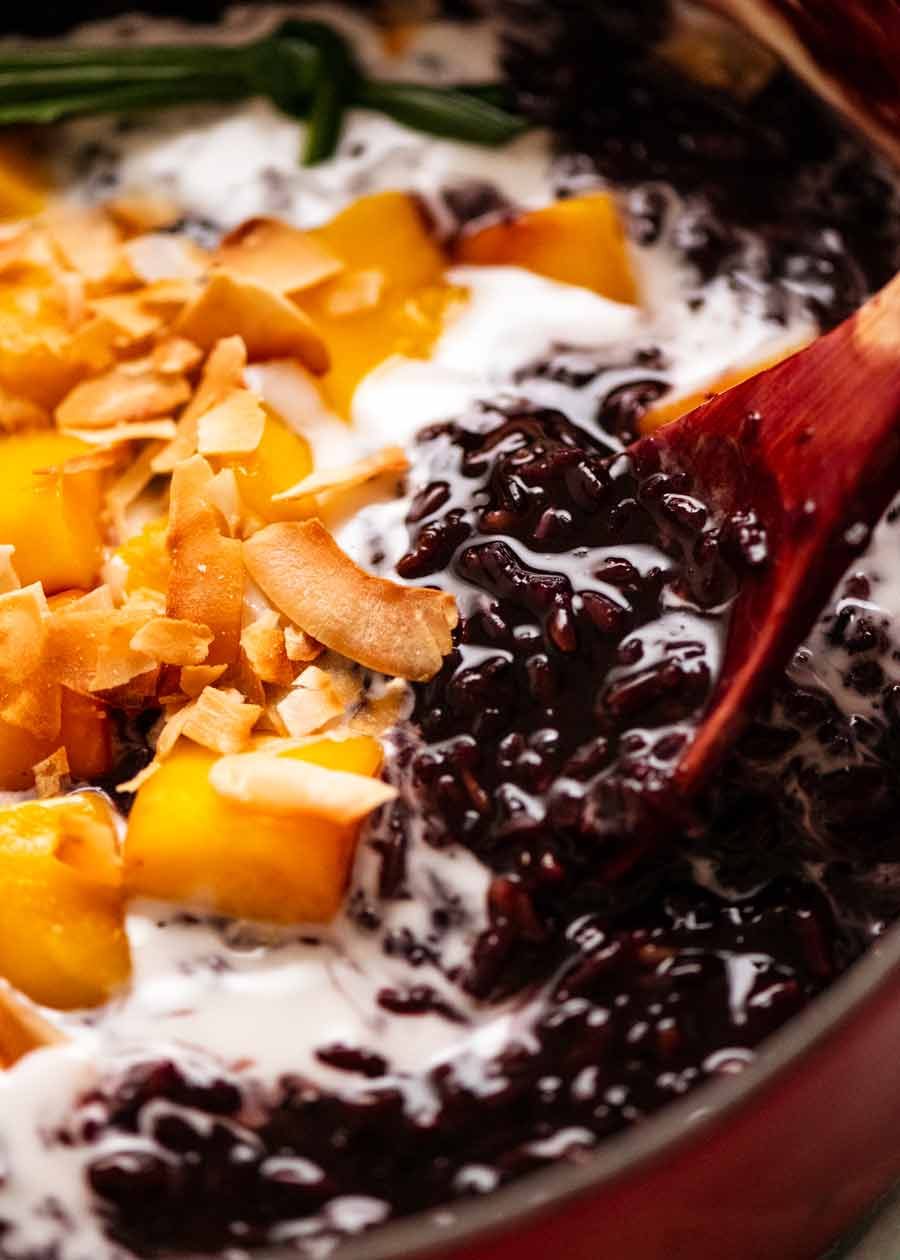
In case you are wondering about my hierarchy of topping priorities (highly recommended down to entirely optional), it’s because this rice pudding is so tasty even unadorned that I guarantee you will be tempted to eat it plain, straight out of the pot.
It’s hard to believe that of a rice pudding just made with rice, water and sugar, isn’t it?? But it’s true!
What to serve with Thai Black Sticky Rice
This is dessert! Finally, a Thai dessert to share, after years of sharing Thai starters and main dishes. 🙌🏻
In addition to the Thai Yellow Curry and Green Papaya Salad I shared earlier this week as part of Thai Week, here are some other Thai restaurant favourites to get you inspired:
And with that, Thai week is done! I hope you enjoyed it as much as I did creating, photographing, filming and … oh, who am I kidding? We all know EATING the food tops the list!
Got a request for the next theme week?? Pop it in the comments below! – Nagi
Watch how to make it
Hungry for more? Subscribe to my newsletter and follow along on Facebook, Pinterest and Instagram for all of the latest updates.
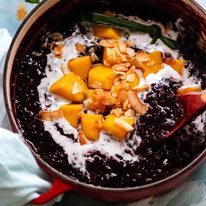
Thai Black Sticky Rice Pudding
#wprm-recipe-rating-0 .wprm-rating-star.wprm-rating-star-full svg * { fill: #343434; }#wprm-recipe-rating-0 .wprm-rating-star.wprm-rating-star-33 svg * { fill: url(#wprm-recipe-rating-0-33); }#wprm-recipe-rating-0 .wprm-rating-star.wprm-rating-star-50 svg * { fill: url(#wprm-recipe-rating-0-50); }#wprm-recipe-rating-0 .wprm-rating-star.wprm-rating-star-66 svg * { fill: url(#wprm-recipe-rating-0-66); }linearGradient#wprm-recipe-rating-0-33 stop { stop-color: #343434; }linearGradient#wprm-recipe-rating-0-50 stop { stop-color: #343434; }linearGradient#wprm-recipe-rating-0-66 stop { stop-color: #343434; }
Ingredients
- 1cupblack glutinous rice(aka black sticky rice) (Note 1)
- 4tbspwhite glutinous rice(white sticky rice) (Note 1)
- 4cupswater
- 2pandan leaves, folded and knotted (Note 2)
- 1cup (loosely packed)palm sugar(or brown sugar), grated with box grater (Note 3)
- 1/2tspsalt
Toppings:
- 1/2cupcoconut cream(very highly recommended)
- 1/8tspsalt
- 1/2cupshaved coconut, toasted, optional (Note 4)
- Mango cubes or crushed peanuts, for topping, optional
Instructions
-
Soak rice: Place both rices in a bowl and cover with water (5cm / 2″ above). Soak for 4 hours (up to 12 hours).
-
Strain the rice and add it to a small pot or large saucepan.
-
Pandan leaves: Add the knotted pandan leaves.
-
Simmer 30 minutes: Add 4 cups of cold water. Bring to boil. Turn stove down to low so it’s simmering very gently (small, slow little bubbles). Simmer 30 minutes (no lid), stirring frequently for the last 15 minutes and almost constantly towards the end (so the base does not catch).
-
Consistency: Rice should be soft / fully cooked through, water reduced, and sauce should be creamy not watery (starch from rice thickens water).
-
Add sugar: Stir in sugar and salt until it dissolves (~20 seconds).
-
Ladle into bowls – it should ooze slowly, not be runny nor so thick it stays in a mound, see video for consistency. (If it’s too thick, add a touch of water and stir).
-
Toppings: Mix coconut cream with salt. Drizzle onto rice pudding. Top with toasted coconut and mango if using. Serve immediately.
Recipe Notes:
Life of Dozer
The moment when Dozer discovered the fridge was full of French cheese… (for care packages for my team going out shortly!)

And the moment I realised it:

Not sure who was happier…
